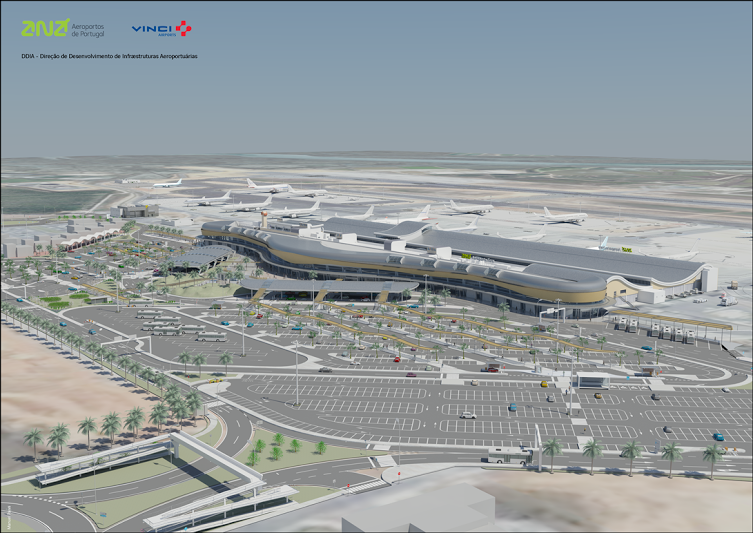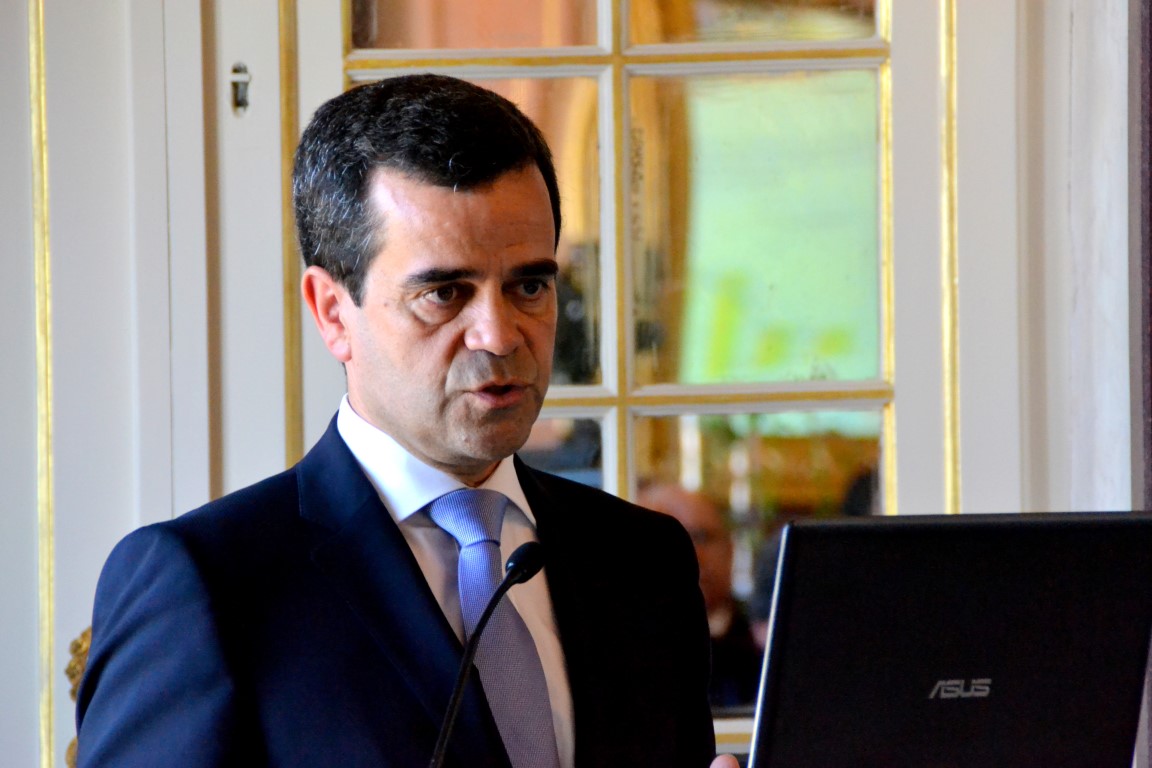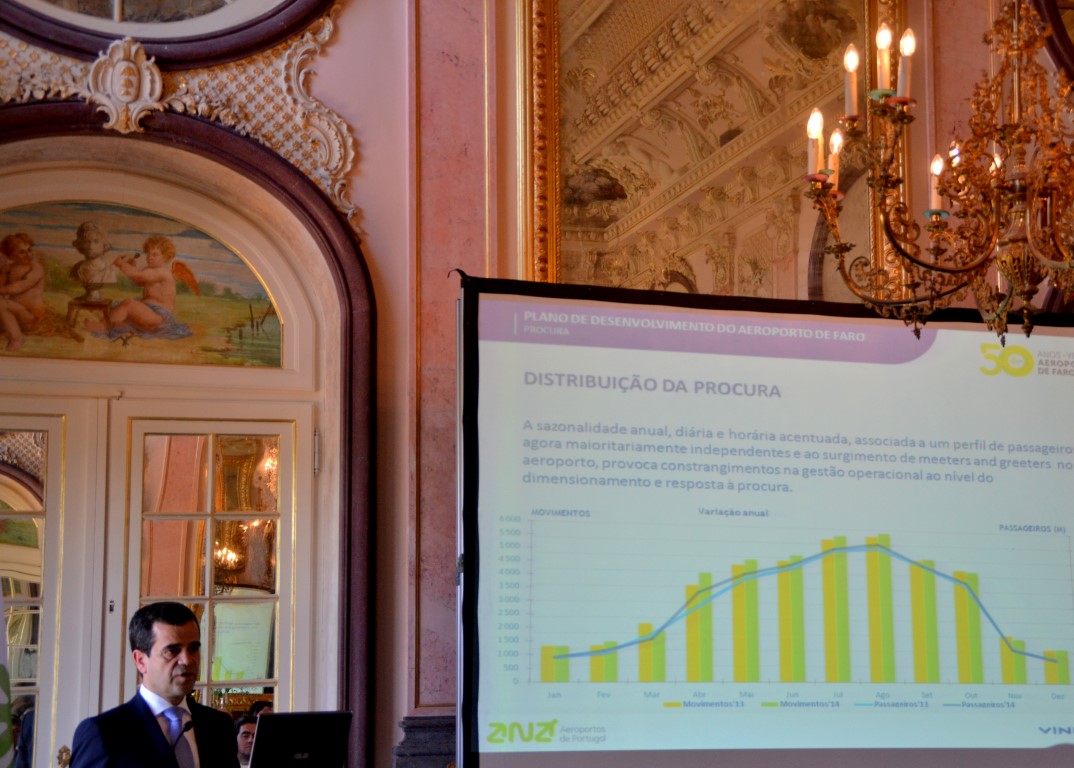 In March 2017, the Airport of Faro it will be better prepared and will respond better to passengers who land there and depart for other destinations.
In March 2017, the Airport of Faro it will be better prepared and will respond better to passengers who land there and depart for other destinations.
The contract for the contract for the expansion and refurbishment of the terminal was signed today and the works, which will increase the response capacity to 3000 passengers per hour, begin in October.
The intervention that will be carried out by Mota Engil has an estimated cost of 32,8 million euros.
The air terminal presentation ceremony took place this morning at Palácio de Estoi. At the event, purposely scheduled for the day when the Airport of Faro celebrates its 50 years of existence, the president of Vinci Nicholas Notebaert, the president of Ana Aeroportos Jorge Ponce de Leão and the new director of the Airport of Faro Alberto Mota Borges.
The planned works have the objective of «responding to the change in the type of traffic, the creation of more operational areas and more public area, as well as the revitalization and expansion of the retail area, the increase in operational safety, the modernization of the image of the terminal and the reformulation of the integration with terrestrial accessibilities.
Among the visible changes that have been presented are, for example, the change of security control from the ground floor to the first floor of the airport, or the expansion of the public arrivals and departure hall throughout the entire area. North front of the building.
Currently, the airport of Faro it has a capacity of 24 movements/hour on the track, but when the works are completed,  this number will change to 30 movements/hour. In terms of passengers, in each direction, the airport will now be able to process 3000 passengers/hour, instead of the current 2400 passengers/hour.
this number will change to 30 movements/hour. In terms of passengers, in each direction, the airport will now be able to process 3000 passengers/hour, instead of the current 2400 passengers/hour.
One of the reasons for this increase is the increase in the number of security checkpoints from the current 11 to 17, and the number of passport checkpoints, which usually cause delays in the arrival of passengers, from 8 to 10.
The need to make changes to the terminal is due to the change in the profile of passengers. Increasingly, airlines low cost bring more people to Faro (represent 70% of airport traffic), and these passengers spend more time on the premises
Alberto Mota Borges, in conversation with journalists, explained that the terminal's reformulation appears as “a way to respond to a passenger profile that we already have, and which we estimate will continue to grow, that use the infrastructure more. For that, we need more areas, commercial spaces with better dimension and better performance, also giving more modernity to an infrastructure that is a reference for the Algarve».
The works are of considerable size, but the airport will continue to operate normally, as most of the works will be carried out at night – which increases the costs of the work.
 Alberto Mota Borges guarantees that the interventions were designed so as not to disturb passengers, especially throughout 2016, when the biggest changes will be made.
Alberto Mota Borges guarantees that the interventions were designed so as not to disturb passengers, especially throughout 2016, when the biggest changes will be made.
“We have a plan that foresees an interaction, which aims to be perfect, to minimize impacts. We estimate that passenger discomfort will be nil or very close to zero, because the entire project was designed to give passengers a good experience», he said.
The renewed airport terminal appears to match the growth in traffic during high season, not least because «the airport is not responding» to demand, according to Mota Borges.
However, in the low season, the seasonality of the region is accentuated and there will be new areas that, during the winter, will be closed. The goal is to mitigate these differences and, according to the official, «ANA has been giving incentives to airlines during the winter period and this has given results, but a 5% growth in July, in absolute terms, is greater than a 20% growth in November».
While landing and passenger fees are a legal imperative, there are 'marketing benefits and incentives that increase competitiveness. These incentives are calculated on the basis of a 50% reduction in the landing fee in the low season and also an incentive per passenger transported. No airport in Europe does this», concluded Mota Borges.


















Comments